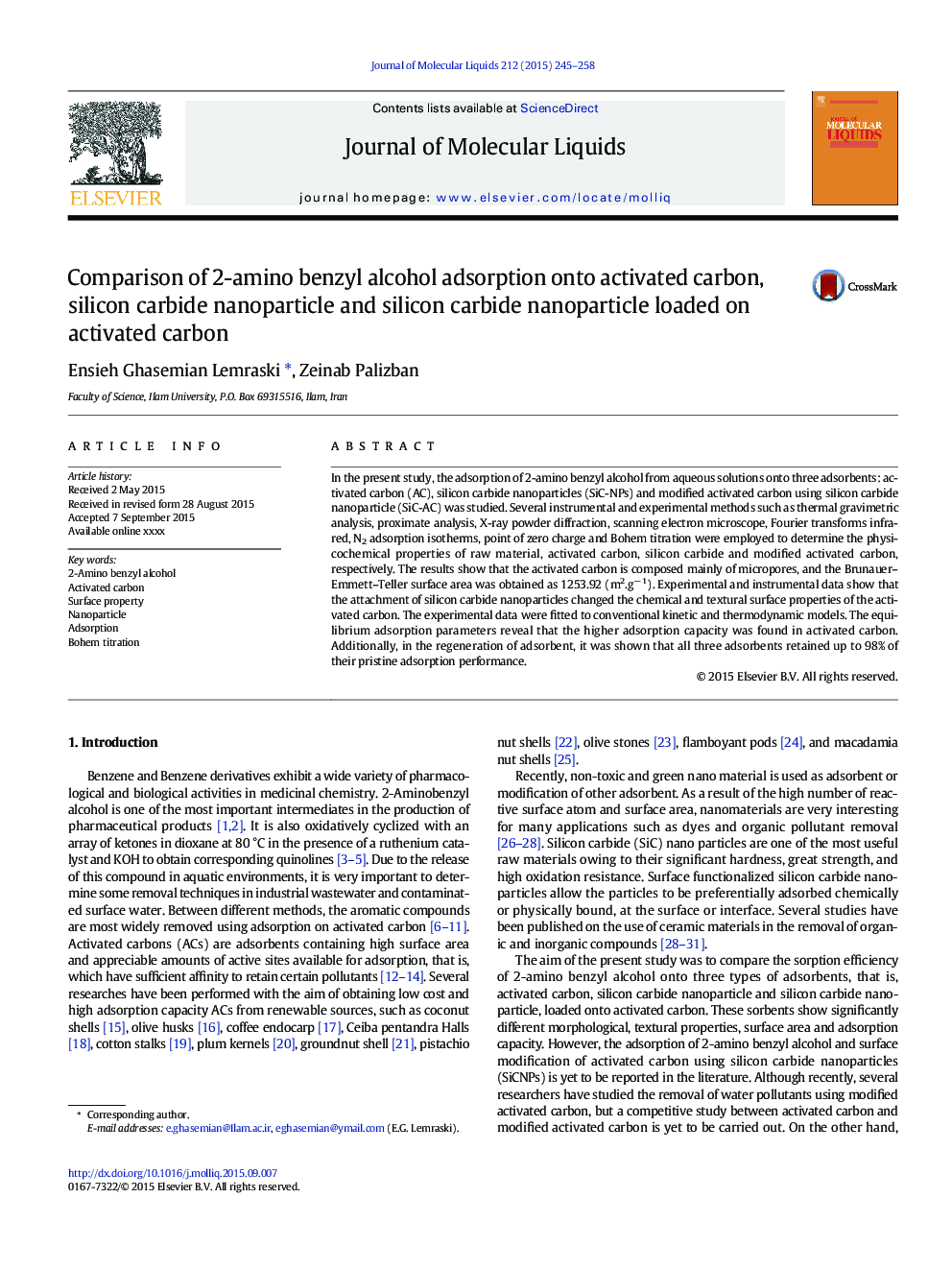| Article ID | Journal | Published Year | Pages | File Type |
|---|---|---|---|---|
| 5410527 | Journal of Molecular Liquids | 2015 | 14 Pages |
Abstract
In the present study, the adsorption of 2-amino benzyl alcohol from aqueous solutions onto three adsorbents: activated carbon (AC), silicon carbide nanoparticles (SiC-NPs) and modified activated carbon using silicon carbide nanoparticle (SiC-AC) was studied. Several instrumental and experimental methods such as thermal gravimetric analysis, proximate analysis, X-ray powder diffraction, scanning electron microscope, Fourier transforms infrared, N2 adsorption isotherms, point of zero charge and Bohem titration were employed to determine the physicochemical properties of raw material, activated carbon, silicon carbide and modified activated carbon, respectively. The results show that the activated carbon is composed mainly of micropores, and the Brunauer-Emmett-Teller surface area was obtained as 1253.92 (m2.gâ 1). Experimental and instrumental data show that the attachment of silicon carbide nanoparticles changed the chemical and textural surface properties of the activated carbon. The experimental data were fitted to conventional kinetic and thermodynamic models. The equilibrium adsorption parameters reveal that the higher adsorption capacity was found in activated carbon. Additionally, in the regeneration of adsorbent, it was shown that all three adsorbents retained up to 98% of their pristine adsorption performance.
Related Topics
Physical Sciences and Engineering
Chemistry
Physical and Theoretical Chemistry
Authors
Ensieh Ghasemian Lemraski, Zeinab Palizban,
